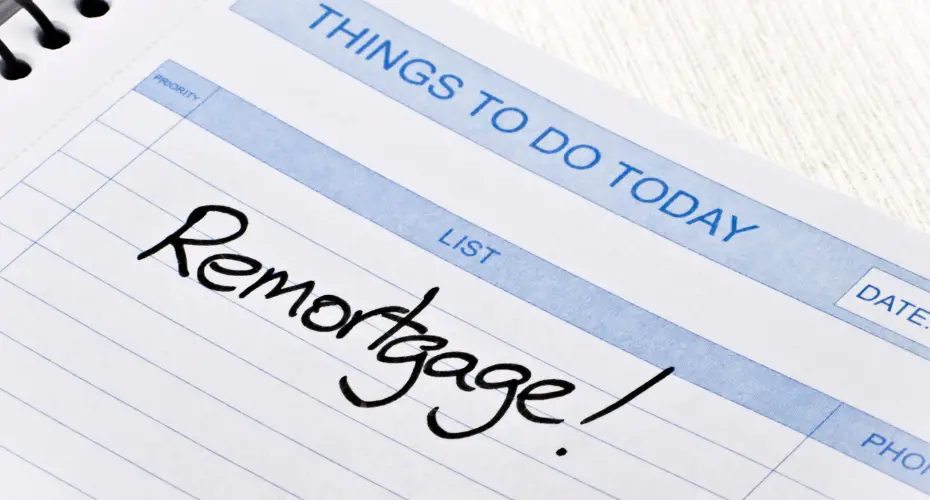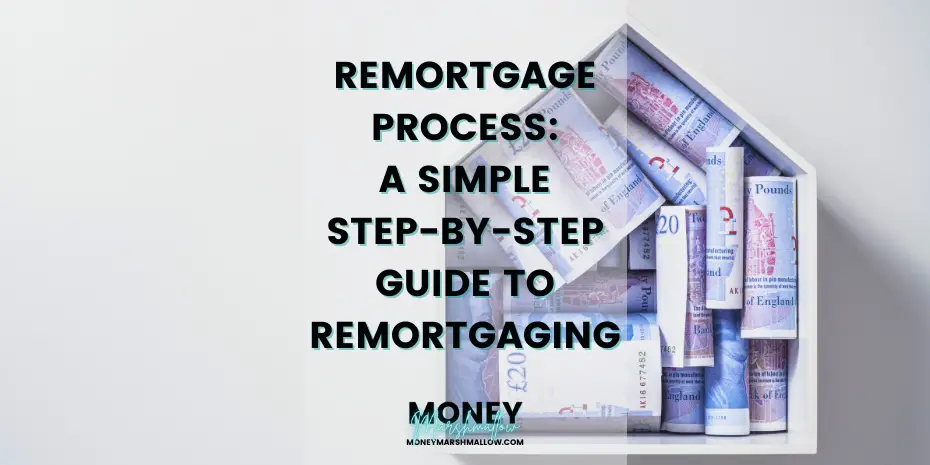Do you want to understand the remortgage process to avoid paying the higher interest rate after your current deal expires? Or are you dreaming of home improvements or property expansion by releasing equity?
Whatever your reason, remortgaging can be a powerful tool, but facing the process can feel complicated. This step-by-step guide explains the complexities, providing you with the knowledge and confidence to navigate your remortgage journey successfully. We’ll demystify early repayment charges, and credit score nuances, and guide you through comparing offers from both your current lender and the open market. Let’s get started to explore how the complete remortgage process works.
What is a remortgage?
Remortgaging involves switching your existing mortgage deal to a new one, usually with a new lender. This can open opportunities for better rates, shorter terms, or more flexible features.
Think of the remortgage process like a new broadband or mobile deal. Just as you can secure a lower monthly rate by moving to a different provider, you can do the same with your mortgage. This is especially relevant when your fixed-term deal expires, potentially shifting you to the lender’s standard variable rate (SVR) – often double the original rate! Not exactly ideal.
So, why consider remortgaging? There are a few common reasons:
- Current mortgage deal expires: Avoid the often expensive standard variable rate when your current rate expires.
- Reducing interest rates: Secure a more competitive deal and save money on your monthly repayments.
- Shortening your mortgage term: Pay off your loan faster and achieve financial freedom sooner.
- Releasing equity: Access funds for home improvements, debt consolidation, or even further investment opportunities.
- Gaining flexibility: Switch to a product with features that better suit your current needs, such as payment holidays or offset accounts.
Remortgaging with existing lender vs new lender
While finding and applying for a new mortgage might seem clear-cut, the rest of the remortgaging process depends on your chosen path: staying with your current lender or finding a new one.
Planning is key and starting up to 6 months before your fixed-rate period ends is recommended to ensure a smooth transition. Now, let’s explore your options:
- Sticking with your current lender: This can be simple and fast. They already know you and your property, which minimises the paperwork and fees. Think of it like upgrading your phone plan within the same network – easy peasy!
- Exploring new lenders: This opens doors to potentially better deals and features. Imagine comparing phone plans across different providers. However, be prepared to gather documents, undergo credit checks, and arrange a property valuation, which can take longer (around 4-8 weeks). But the potential savings might be worth it!
How long does the remortgaging process take?
Remortgaging typically takes 4-8 weeks after applying, but expect some wiggle room. Switching lenders can add a few weeks and unexpected issues can cause delays. Stay organised with documents and discuss realistic timelines with your chosen lender or broker.

What to consider before remortgaging
While remortgaging isn’t quite a roller coaster ride, it’s certainly more than picking up a new pair of socks. There are situations where remortgaging might not be your best bet. So, before taking the plunge, ask yourself:
1. Is your credit score in good shape?
Diving into a remortgage with a subpar credit score can mean skydiving into unfavourable deals, or perhaps no deal at all. Lenders need trust in your repayment capability before handing you a chunk of change. Check your score with credit reference agencies like Experian or Equifax. Addressing any hiccups by improving your credit score before applying can significantly improve your chances.
2. Has your employment status changed?
A recent job change, even with increased income, might not paint a favourable picture for lenders. They can see change as a risk, and probationary periods associated with new jobs raise further concerns. If you’re self-employed, you might need to wait until you have at least a year (sometimes three) of accounts to prove your income stability.
3. Are you looking to remortgage before your current fixed-term deal ends?
Lenders can charge hefty exit fees or early repayment charges for saying goodbye. If you are looking to remortgage early, check the fine print to understand these potential costs, especially if your primary reason for switching is long-term savings. Remember, your mortgage is likely your biggest monthly expense. If lowering costs is your goal, make sure remortgaging achieves that, factoring in legal fees, exit fees, and other costs.
Related: How to afford a bigger mortgage
A typical remortgage process, step by step
Step one: Find a new deal
The first step of the remortgage process is to find a new mortgage deal.
You can do this by sticking with your current lender and moving to a new, better deal. This is called a product transfer. You can often do this by logging into your online mortgage portal or by contacting your mortgage lender directly. If you are looking to go with a different lender, it might be a good idea to contact a mortgage adviser or a mortgage broker. They can often access thousands of deals from different lenders, making it easier for you to find the best deal for you.
Using a broker, you’ll need to provide:
- Your personal info
- Your credit report
- Details about your current mortgage
- Details about your income and expenses
- An idea of what you want to achieve with your remortgage. Ask yourself: do you want to save money on your monthly payments? Or release equity to fund home improvements?
Step two: Get your decision in principle
After finding a remortgage deal you like, your next important step is getting a Decision in Principle or DIP (sometimes also known as an Agreement in Principle or AIP). This important preliminary assessment tells you if the lender is likely to approve your mortgage application based on the information you initially provided.
Understanding potential outcomes:
1. DIP accepted: The lender believes you are financially capable of managing the loan repayments. You can proceed to the next step with increased confidence.
2. DIP declined: If your application is initially declined, don’t be discouraged. It’s important to inquire with the lender about the specific reasons behind their decision. In some cases, providing additional information or working with a mortgage broker who can address potential concerns in your credit report might change their assessment.
While a DIP is not guaranteed approval, it serves as a strong indicator of the lender’s potential willingness to move forward based on your initial information.
Step three: Get your documents ready
With your DIP secured, it’s time to prep for the full remortgage application. Similar to your initial mortgage journey, you’ll need to gather some essential documents:
- Proof of identity: Your go-tos are a valid passport or driving license. Some lenders may accept other forms too.
- Proof of address: A recent (within 3 months) utility bill or bank statement sent to your home address usually does the trick.
- Proof of expenses: The last three months’ bank statements should be enough.
- Proof of earnings: This depends on your situation:
- Employed: Show payslips from the last three months. Your P60 might be needed for additional income like bonuses or commissions.
- Self-Employed: Provide your last two years’ SA302s and corresponding tax year overviews. Some lenders might request trading accounts or an accountant’s reference.
Remember, this is just a general list. Your specific lender might require additional documents, so checking with them beforehand is always a good idea. This guide will remain your trusted companion throughout your remortgaging journey, offering clarity and keeping you informed every step of the way!
Step four: Submit your full remortgage application
With all your documents gathered, your mortgage advisor or broker takes the reins. They’ll package everything, including your DIP, credit history, and supporting documents, into a full remortgage application for your chosen lender.
The lender will then carefully review your application, credit history, and documents to ensure you can comfortably handle the monthly payments. They might reach out if they need anything further. This stage is all about them crunching the numbers.
Your advisor or broker will keep you updated throughout the process, letting you know if any additional information is needed.

Step five: Your lender does a remortgage valuation
Whether you’re staying put or switching lenders, you’ll encounter the remortgage valuation. This step helps the lender verify your property’s value matches your claims before approving your new deal. In simpler terms, they want to ensure they could recoup their loan if you ever couldn’t keep up with payments.
There are a couple of ways that lenders carry out property valuations:
1. Desktop valuations: Think of it as online research. Qualified surveyors use recent data on similar properties in your area to estimate the value of your property.
2. Drive-by valuations: Just as the name suggests, a surveyor takes a quick peek from their car, assessing the exterior condition without stepping inside.
Remortgage valuation fees typically range from £250 to £1,500 depending on your property’s size and value. Thankfully, many lenders now offer them for free as part of the remortgage package.
If the surveyor’s valuation aligns with your application, the lender is more likely to offer you the desired loan amount.
Step six: Get your remortgage offer
Following the comprehensive review of your application, supporting documentation, credit check, and property valuation, the lender will deliver their final decision. Three potential outcomes may occur:
1. Remortgage application accepted: Congratulations! Your application has successfully met the lender’s affordability criteria, and they are pleased to extend you the requested loan amount.
2. Information required: The lender may require additional information or clarification before reaching a final decision. In this scenario, your dedicated mortgage advisor or broker will be readily available to assist you in addressing their inquiries.
3. Application declined: Unfortunately, the lender may not be able to offer you a remortgage deal at this time. While this scenario can even occur following the issuance of a Decision in Principle (DIP), please be assured that your advisor or broker can provide clarity on the reasoning behind the decline and advise you on potential next steps.
Should your application be approved, you will be granted a seven-day “reflection period” to thoroughly consider the terms of the remortgage offer before progressing. Completion of the remortgage cannot occur within this timeframe unless you choose to waive the waiting period.
Step seven: Remortgage completion and conveyancing
With your new mortgage offer in hand and signed approval, the final stage involves engaging a conveyancing solicitor to handle the legal work and finalise your remortgage. If you remortgage with your current lender, by simply moving to a new rate or deal, no additional legal work is required. Otherwise, a remortgage will require you to have a solicitor or conveyancer, to help with the legal side of things.
Even though you’re not changing ownership, the “legal charge” or “mortgagee” associated with your property changes when you remortgage. Licensed conveyancers specialise in “conveyancing,” the legal transfer of property titles. They ensure everything is in order with the offer and your property.
Your conveyancer performs various checks and then requests a “redemption statement” from your current lender (if switching) to inform your new lender how much they need to pay off your existing mortgage.
Once everything is finalised, your new lender confirms your new monthly payments and the Land Registry updates their records and title deeds to reflect your new mortgage agreement.
Conclusion: The remortgage process
In this guide, we have covered the details of the remortgaging process, providing a step-by-step roadmap to help you navigate the process. Remember, remortgaging isn’t just about securing a better rate; it’s about strategically aligning your mortgage with your evolving financial situation.
Remember these key takeaways:
- Evaluate your needs: Is your current mortgage burdening you? Do you seek additional funds for home improvements or debt consolidation? Clearly define your goals before embarking on this journey.
- Explore your options: Compare remortgage options, rates and terms from various lenders to secure the best possible deal that aligns with your needs.
- Be prepared: Gather necessary documents and understand associated costs like legal fees and potential exit fees.
- Seek guidance: Consider consulting a mortgage broker for expert advice and assistance in securing the best deal and navigating any complexities.
By following these steps, carefully evaluating your individual needs, and potentially seeking professional guidance, you can unlock the power of remortgaging. Remember, a well-informed decision can transform your old mortgage into a key unlocking a brighter financial future.
Related: How to prepare for the rising mortgage interest rates

This article may contain affiliate links. If you sign up through these links, we may earn a small commission at no extra cost to you, supporting our content creation.
